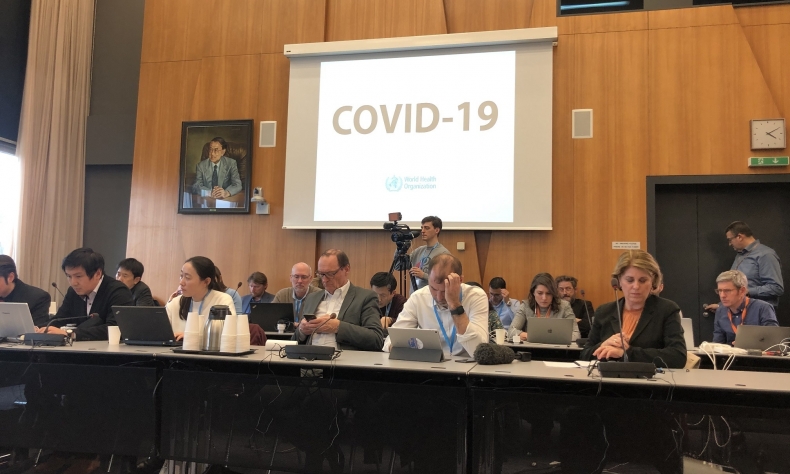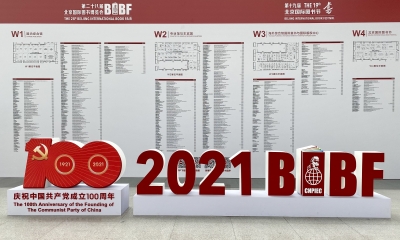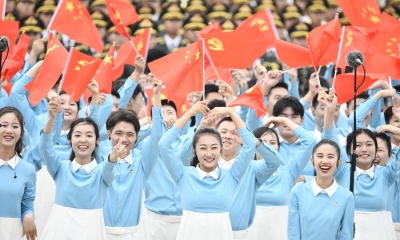Coronavirus “Stabilizing” but China and World Remains Vigilant

Such cooperation and commitment as witnessed by China and the international community is reassuring. It underscores the fact that in our globalized world, the challenges we face are often global, and as such, require a global unified response.
Chinese health authorities reported an additional 2,015 confirmed cases of novel coronavirus in the last 24 hours, bringing the total up to 44,653 (February 11, 24:00). A further 97 people have died, bringing the total number of deaths up to 1,113.
The figures certainly make for grim reading, but recent reports from China’s National Health Commission (NHC) show signs of hope.
On February 10, the NHC reported that the cure rate has increased significantly across China from 1.3 percent by January 27 to 10.6 percent by February 11. To date, more than 4,000 infected patients have recovered and been discharged from hospital.
The NHC also reports that outside of Hubei Province – the epicenter of the outbreak – the number of confirmed cases has been steadily falling for eight days. On February 11, new confirmed cases outside of Hubei was down to 377, from 890, on February 3.
The World Health Organization (WHO), said the fall in new cases shows the epidemic is “stabilizing.” Michael Ryan, head of the WHO’s Health Emergency Programme welcomed the “good news.”
Zhong Nanshan, a leading respiratory expert, has predicted that the virus could peak between the middle and end of the month. “The development of the epidemic shows that new cases are emerging slower than before. Based on our model… the outbreak could peak anytime between mid-February to the end of the month,” he said.
China’s fight continues
The steady fall in confirmed cases outside of Hubei Province, is of course good news, but China remains vigilant.
In Hubei, authorities and an army of volunteer health professionals from around the country are battling to bring down human-to-human transmission rates, in line with the rest of the country.
Outside of the epicenter, with the majority of people returning to work this week after an extended Spring Festival holiday, authorities are stepping-up their efforts of prevention and control.
China’s State Council issued a circular to local authorities and businesses on how to manage the return to work in accordance with prevent and control measures. The circular advised staggering the dates of return, implementing a “flexible” working environment, and stressed the need for regular temperature checks and masks to be worn at all times in public areas.
Health experts have warned that densely populated ‘clusters’ provide the “perfect” environment for a potential spread. Accordingly, particular focus is now on the big cities with large populations, such as Beijing and Shanghai.
Public transport providers have announced a comprehensive and intensive prevention plan. Subway and bus operators in the major hubs have confirmed they will put on additional services, limit passenger numbers during peak times, increase disinfection efforts and implement temperature checks across all subway networks and bus routes.
President Xi Jinping, visiting a local community in Beijing’s Chaoyang District to inspect its disease control and prevention methods, issued a message of hope and resilience. During the inspection, Xi visited a hospital on the frontline in the capital’s battle against novel coronavirus. The Chinese leader praised staff for their efforts in saving peoples’ lives and expressed confidence that China will achieve victory in the “People’s War” against coronavirus.
Global fight expands
To date, the spread of novel coronavirus has been confirmed in 24 countries worldwide. Outside of China, the worse affected are Japan, Singapore and Thailand, with 202, 47 and 32 cases respectively.
With cases around the world slowly rising, the WHO Director-General, Tedros Adhanom Ghebreyesus, has called on the international community to “stand in unison” in the fight against novel coronavirus.
The WHO chief said currently there exists “a window of opportunity” to fight against the deadly virus. “We must use the current window of opportunity to stand in unison,” he said.
Leading the international efforts, the WHO has sent a delegation of renowned experts to Beijing in order to form a collaborative effort with Chinese experts. The joint China-WHO team, led by Dr Bruce Aylward, a veteran in public health emergency, will conduct in-depth exchanges on the current situation and epidemic prevention and control methods.
On Wednesday, dozens of the world’s top scientists and medical experts also gathered at the WHO headquarters in Geneva. The two-day conference is set to establish research priorities and attempt to speed-up efforts to develop an effective vaccine
Typically, the process of creating a vaccine ready for market usually takes years to produce, but researchers are confident they can develop one in under six months.
Chinese scientists have developed a vaccine which has already undergone animal testing. If the testing yields positive results, clinical trials could begin as early as April.
Professor Robin Shattock, leading a team of researchers at Imperial College London, has said that a vaccine developed by his team is ready to begin testing on animals and expects human studies to be ready by the summer. Researchers at the University of Queensland in Australia, have also witnessed “promising results” and should have a vaccine within six months.
More than 15 leading laboratories around the world have joined the flight and are working round the clock to develop effective treatment solutions. Such cooperation and commitment as witnessed by China and the international community is reassuring. It underscores the fact that in our globalized world, the challenges we face are often global, and as such, require a global unified response.
 Facebook
Facebook
 Twitter
Twitter
 Linkedin
Linkedin
 Google +
Google +







